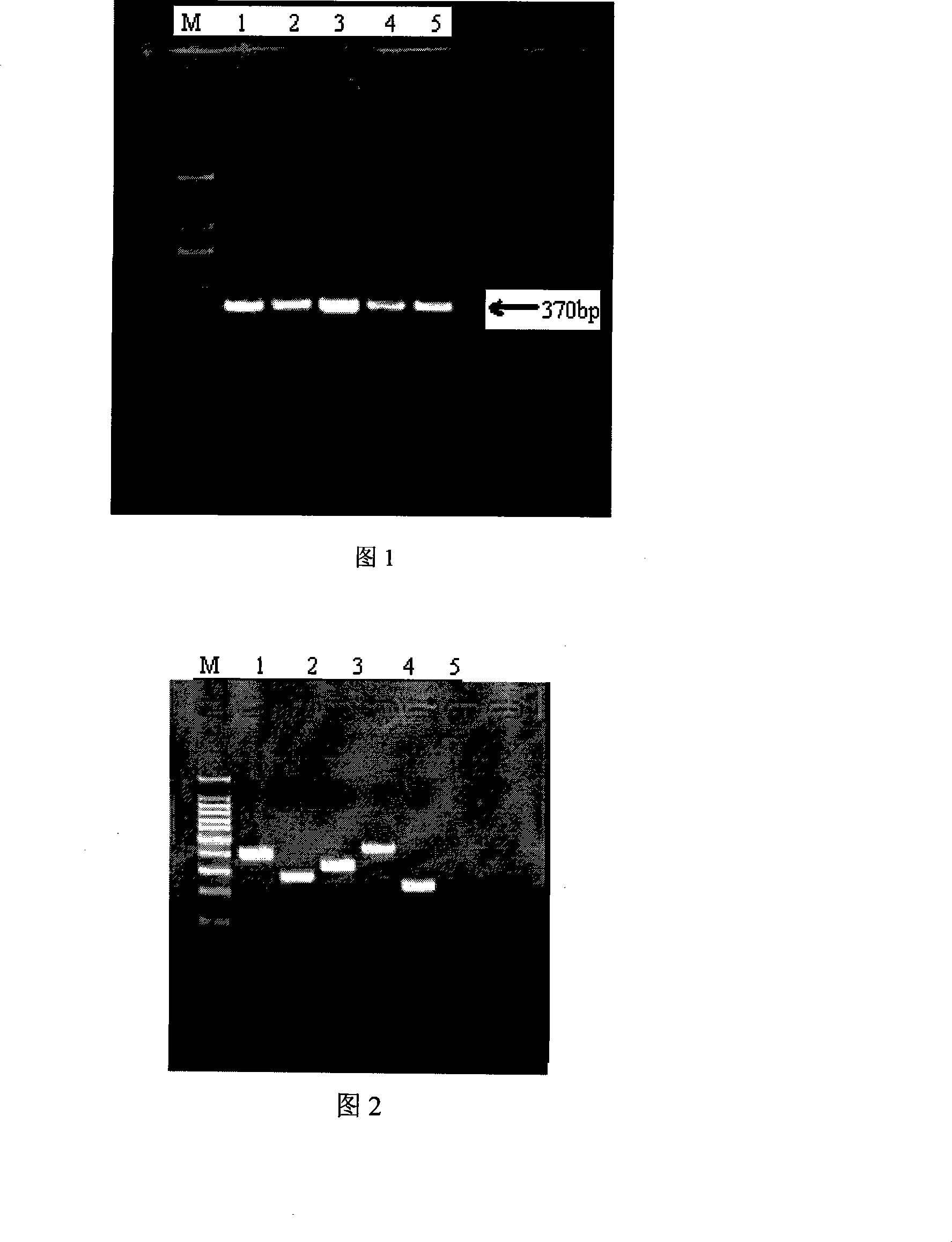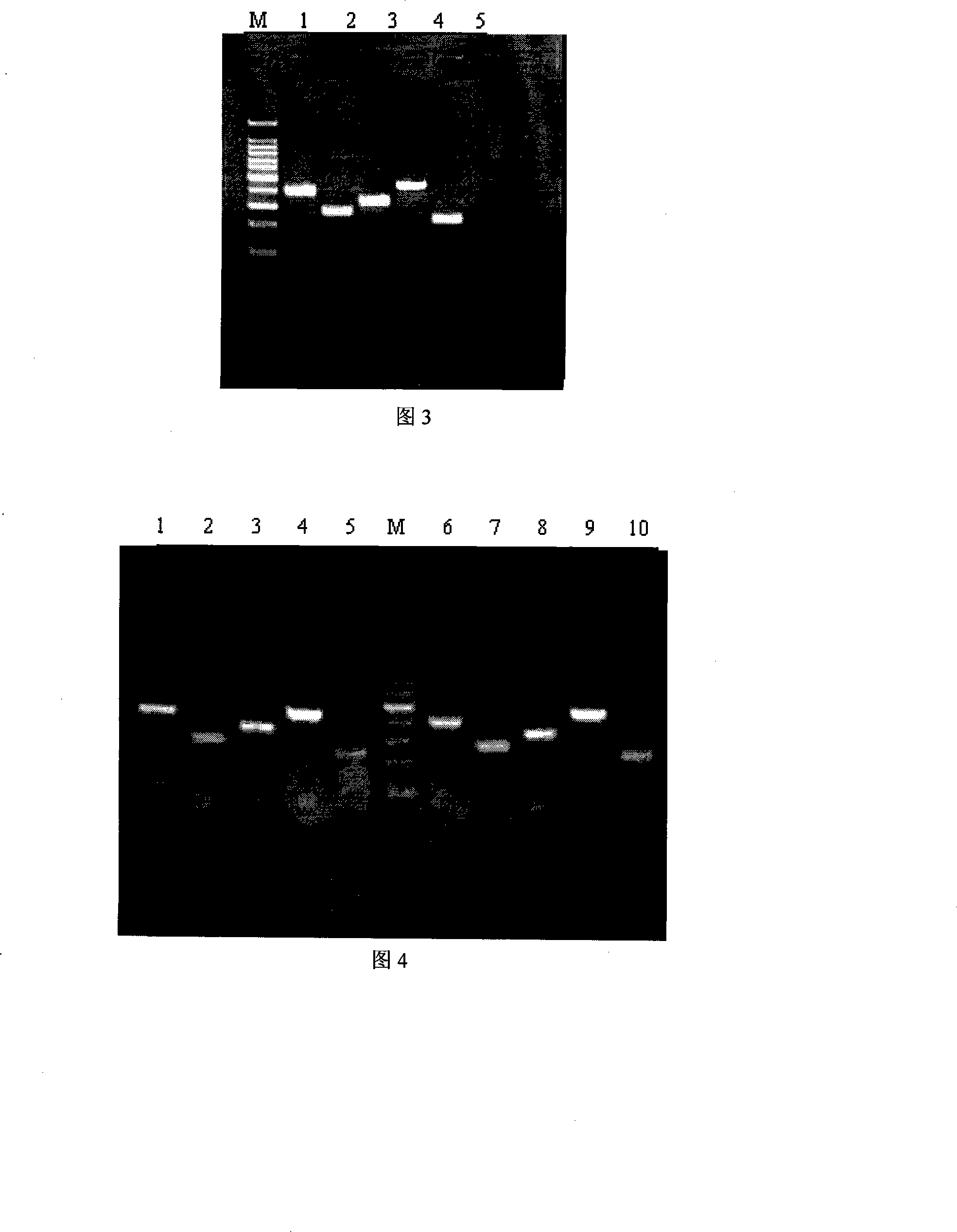Identification method for animal derived materials
An animal-derived component and animal-derived technology, applied in biochemical equipment and methods, microbial measurement/inspection, analytical materials, etc., can solve the problems of undetectable thermal processing and low detection sensitivity, and achieve improved safety , high sensitivity, cost reduction effect
- Summary
- Abstract
- Description
- Claims
- Application Information
AI Technical Summary
Problems solved by technology
Method used
Image
Examples
specific Embodiment approach 1
[0013] Specific Embodiment 1: In this embodiment, animal-derived components are identified according to the following methods: 1. Put the animal-derived sample to be identified into a mortar and grind it; 2. Put 50 mg of animal-derived sample powder into a centrifuge tube, and add 200 μL TE solution and 400 μL cell lysate (is it cell lysate or tissue cell lysate? Please give one or two specific names), vortex and mix well, then add 300 μL water-saturated phenol, 275 μL chloroform and 25 μL isoamyl alcohol, Shake well; 4. Centrifuge at 14000r / min for 10min; 5. Take the centrifuged supernatant and add an equal volume of chloroform and isoamyl alcohol mixture, and the chloroform and isoamyl alcohol mixture is prepared by chloroform and isoamyl alcohol at 24 : 1 volume ratio mixing composition; Six, centrifuge under the condition of 14000r / min for 10min; Seven, take the centrifuged supernatant of step six, add isopropanol with a supernatant volume of 0.8, and then centrifuge under ...
specific Embodiment approach 2
[0016] Embodiment 2: The difference between this embodiment and Embodiment 1 is that step 4 is repeated once. Other steps and parameters are the same as those in Embodiment 1.
[0017] In this embodiment, the identification effect is better, and the bands of the amplification products are clearer.
specific Embodiment approach 3
[0018] Specific embodiment three: the difference between this embodiment and specific embodiment one is: in step nine, the PCR detection system is respectively pig, cattle, sheep, horse, chicken and vertebrate identification group, and each group of PCR detection system is 50 μ L, by 0.5 μL Takara Taq DNA polymerase, 5 μL 10×PCR Buffer buffer, 2 μL animal-derived sample DNA to be identified, 4 μL NTP, 1 μL upstream primer, 1 μL downstream primer and 36.5 μL double distilled water. Other steps and parameters are the same as those in Embodiment 1.
[0019] This embodiment can distinguish animal and plant food ingredients, and can distinguish whether the ingredient is a vertebrate, and can confirm whether the animal-derived sample to be identified contains pig, cow, sheep, horse or chicken ingredients. In this embodiment, identification is carried out through dual detection of vertebrates and specific animals, which improves detection efficiency and accuracy and saves detection c...
PUM
 Login to View More
Login to View More Abstract
Description
Claims
Application Information
 Login to View More
Login to View More - R&D
- Intellectual Property
- Life Sciences
- Materials
- Tech Scout
- Unparalleled Data Quality
- Higher Quality Content
- 60% Fewer Hallucinations
Browse by: Latest US Patents, China's latest patents, Technical Efficacy Thesaurus, Application Domain, Technology Topic, Popular Technical Reports.
© 2025 PatSnap. All rights reserved.Legal|Privacy policy|Modern Slavery Act Transparency Statement|Sitemap|About US| Contact US: help@patsnap.com


